What is Tai Chi & what are the health benefits? (complete guide)
Tai chi is an art embracing the mind, body and spirit. Originating in ancient China, tai chi is one of the most effective exercises for health of mind and body. Although an art with great depth of knowledge and skill, it can be easy to learn and soon delivers its health benefits. For many, it continues as a lifetime journey.
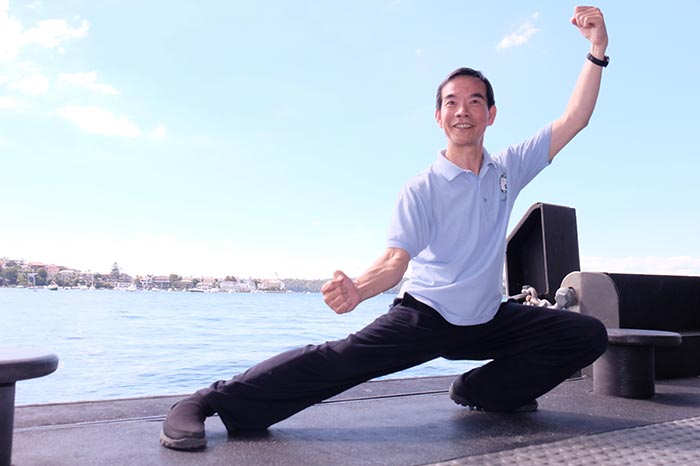
By Dr Paul Lam
Tai Chi has virtually changed my life, since I started practicing it after graduating from medical school in 1974.
Before this moment, the osteoarthritis that I’d developed in my early teens had become debilitating. Thankfully I’d remembered that Tai Chi was considered effective for arthritis, back in the Chinese village where I grew up.
What did I have to lose? I decided to give it a try. My late father-in-law was an accomplished practitioner, and he was my main teacher.
Now in my late sixties, my arthritis is well controlled, and I have Tai Chi to thank for that.
I work more than twelve hours most days, teaching Tai Chi and practicing medicine as a family physician. I feel happy and healthy. My Tai Chi journey has given me more than just enjoyment, it’s become an integral part of my life.
This article explains key information about the ancient Chinese discipline that’s changed so many lives.
We also talk about how my organisation has created modified Tai Chi programs that help people with medical conditions and disabilities.
Keep reading to see the proof from scientific studies, and support from agencies like the CDC.
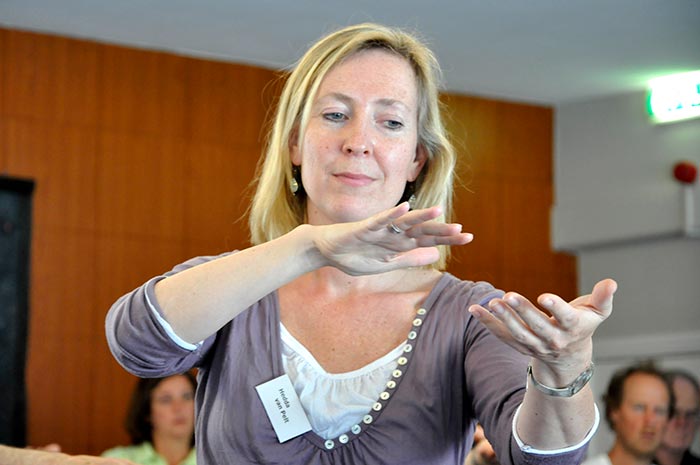
Table of Contents
- What is Tai Chi?
- Health benefits of Tai Chi
- Principles of Tai Chi
- Different styles
- History
- Is Tai Chi safe?
- Who is it suitable for?
- How often should I practise Tai Chi before seeing results?
- Tai Chi for Health programs (Dr Lam incorporates medical science)
- Is it possible to learn Tai Chi from a DVD or video?
- Medical benefits of Tai Chi for Health programs (scientific studies)
- How to get started with our health programs
What is Tai Chi?
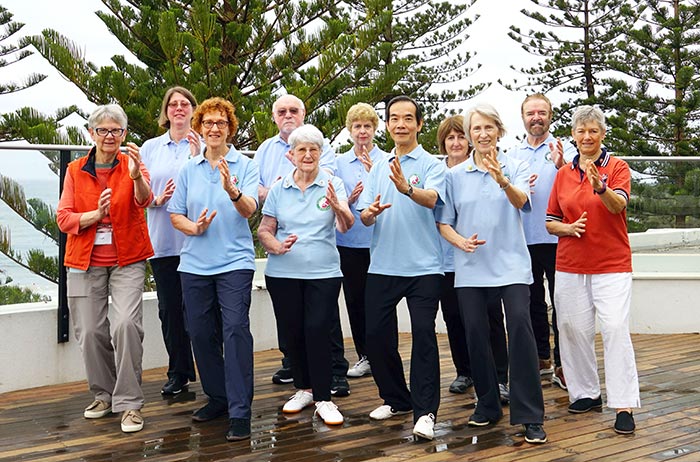
Tai Chi is a mind-body exercise originating from ancient China, where it started as a famous martial art. These days, it’s practised around the world as an effective exercise for health.
It’s impossible to describe this complex art in one sentence. Tai Chi can be many things for different people, but regular practise will improve your wellbeing.
At the heart of it, Tai Chi is a moving meditation in the form of a series of gentle exercises that create harmony between the mind and body. The ultimate purpose is to cultivate our inner life energy (qi) to flow smoothly and powerfully through the body. This is a spiritual experience, as much as a physical one.
Movements are fluid, graceful, circular and slow. Breathing is deep, aiding visual and mental concentration. This relaxes the body and allows the life force to flow freely.
This practice is so effective because it consists of exercises that are equally balanced between yin and yang (opposite forces that complement each other, such as dark and light, or female and male).
Tai Chi is easy to learn. Many people embark on a life-long journey to deepen their experience, as there are always new levels of understanding to uncover. This is part of the appeal.
Tai Chi can be practised almost anywhere and the cost of learning is relatively low. It’s suitable for anyone, because exertion levels can be adjusted to suit your physical condition.
Health benefits of Tai Chi
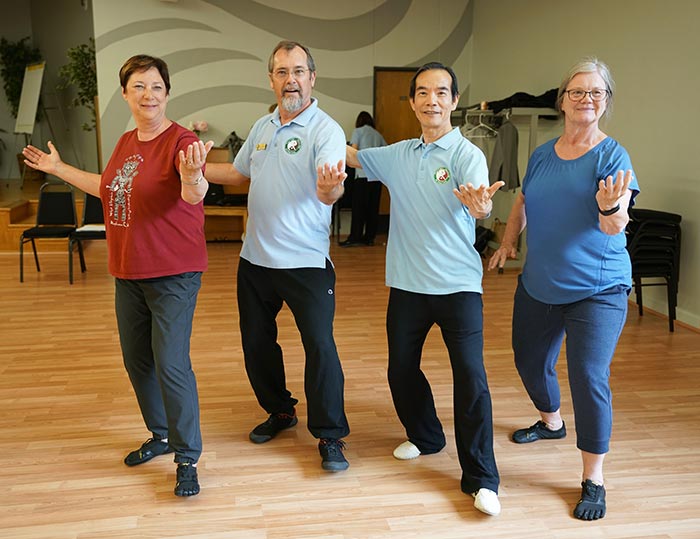
On a physical level, Tai Chi improves strength, flexibility, aerobic conditioning and balance. It’s been proven to improve cardiovascular fitness, lower blood pressure, prevent falls and help people who have arthritis.
And the list goes on!
There are also immense emotional and mental benefits. The deliberate movements help people to feel more relaxed, grounded and present in their bodies. This lowers anxiety, stress and depression; while improving memory, focus and sleep.
Tai Chi is probably the most effective exercise for your entire wellbeing. It’s so enjoyable that millions of people around the world are practising it, no matter their age or physical condition.
It’s all about improving your quality of life and feeling empowered.
Numerous medical studies show the overwhelming benefits of Tai Chi, especially when modified programs address specific health conditions. Research shows a regular routine can prevent many health problems and help people to better manage the conditions they already have.
We look at these clinical studies in more detail further down, so keep reading to learn more.
Principles of Tai Chi
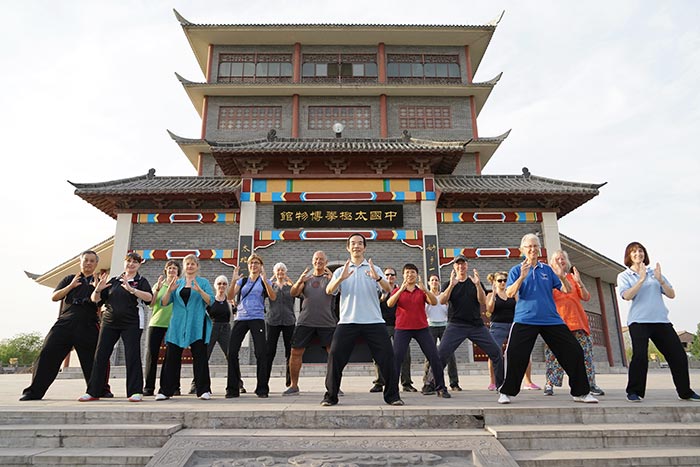
The guiding principles bring us back to the laws of nature, upon which Tai Chi was based.
Movements are slow, smooth and graceful, to help us to be present. Breathing is controlled, for this same reason.
Modern life is so fast and unnatural. Tai Chi brings us back to the slow phase of nature to recharge our minds and bodies. We crave this balance. This is why so many people enjoy this practice (though it may take some time to get used to the slower pace).
I’ve divided the principles into three main sections – based on my interpretation over 40 years of practice and the latest medical knowledge.
- Movement Control
- Tai Chi movements are slow to help you integrate mind and body. They are smooth to facilitate serenity, flowing like water in a river. This continual flow gathers inner energy like hydraulic power, growing as it flows.
- Move as though you’re pushing against gentle resistance. Every movement generates a soft inner power. Another good way is to imagine the air around you becoming denser, or pretend that you’re moving in water.
- Body Structure
- Maintain an upright posture. Studies show that good posture strengthens the Deep Stabiliser muscles, which support the spine. It also provides more space for internal organs. What’s more, you feel stronger and more positive when upright. Qi flows better in an aligned body. A poorly aligned body puts extra strain on the spine and compromises balance.
- Be mindful of weight transference. Balance is an essential part of Tai Chi. Like nature, we are happier and healthier when in harmony.
- Internal Components
- Loosen or ‘松 – Song‘ the joints. Relax when you do Tai Chi, but not to the point where your muscles get floppy. Instead, consciously and gently stretch your joints from within. Qi can only flow smoothly and powerfully if your joints are Song (and not tensed). Song also strengthens the internal ligaments and muscles, enhancing the function of joints.
- Develop a state of mental quietness or ‘静 – Jing’. You’re more mindful of the present and the self when you’re ‘Jing’.
These principles may seem simple, but they’re profound.
Different styles of Tai Chi
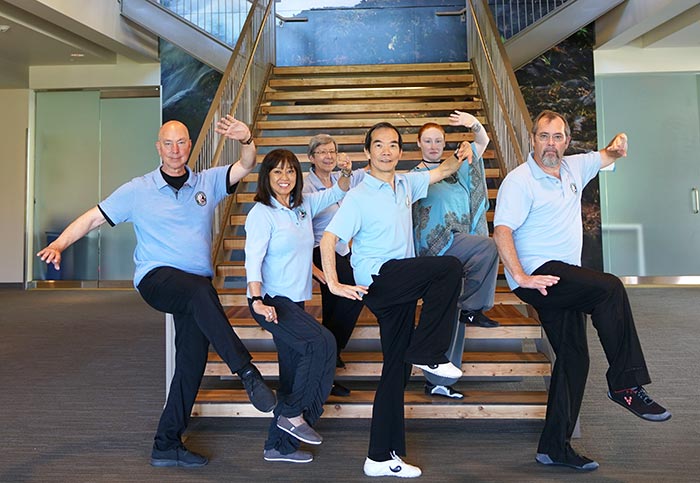
There are many different styles of Tai Chi practice, including the five main ones: Chen, Yang, Wu, Hao and Sun.
Each of these styles is named after the Chinese families that developed them, based on their interpretation of the original Chen style. They’re all based on the same principles, but there are some differences in positioning, speed and force of movement.
At a glance:
- Chen style: oldest form, characterised by alternating fast and explosive movements with slow and gentle movements.
- Yang style: most popular form practised today, characterised by gentle, large frame movements. Most of our programs are based on this style.
- Hao style: emphasis is placed on internal force (it’s a lesser known style)
- Wu style: characterised by softness. Emphasis is placed on redirecting incoming force with a slightly forward leaning posture.
- Sun style: characterised by lively steps and a slightly higher stance (it’s the youngest of all forms and used in our arthritis programs).
Let’s apply these ideas to one example:
Different forms have different ways of moving the feet. If we look at Yang, you move forward and backward by lifting your foot slightly off the ground and touching down like a cat. In Chen style, you step forward by lifting your foot higher and brushing the heel along the ground.
Different forms can also have different hand shapes. The Yang approach uses an open palm, while Chen uses a closed one.
Even within one style, you can encounter many variations in set movements.
This happens when individuals incorporate a particular interpretation of a hand or foot movement into their daily practice, because it feels better than the set movement.
My point is that minor differences aren’t important.
There isn’t one “right” way to practise a movement, as long as it follows the essential principles of Tai Chi.
I believe the ancients would have loved to be exposed to different styles and teachers, as we are today.
This gives every practitioner the opportunity to see what works best for him or her.
There’s no need to spend a lifetime devoted to a single path, only to later discover it wasn’t the right one. Instead, we can incorporate different interpretations and shorten our path to a higher level.
Most importantly, we can only reach this level if we’re in harmony with ourselves and nature.
History of Tai Chi
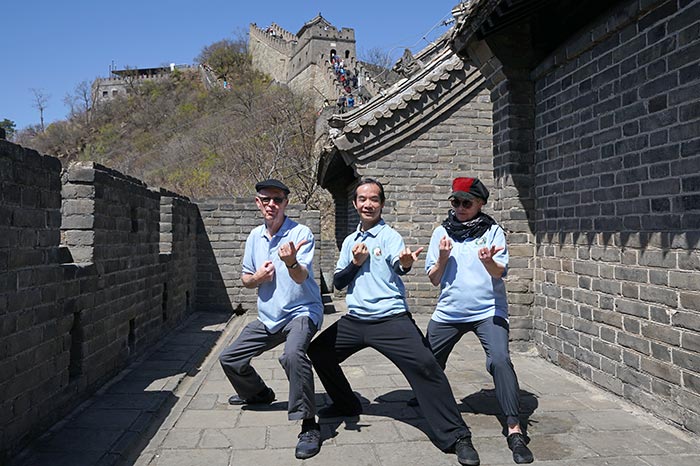
Tai Chi is based on traditional medicine, Qigong and martial arts techniques from thousands of years ago.
However the real origins are obscure and shrouded in legend…
The first known written reference appeared in the Book of Changes over 3000 years ago during the Zhou Dynasty (1100-1221 BC). This book explains “…in all changes exists Tai Chi, which causes the two opposites in everything.”
Mystical accounts claim the father of Tai Chi was a legendary figure named Zhang Shanfeng. This famous Taoist priest of the 15th century was believed to possess superhuman abilities and immense internal power.
Less romantic (but more reliable) accounts date back to Chen Wangting, a 16th century Royal Guard of the Chen village in Wenxian County, Henan Province.
After retiring from the army, he was drawn to the teachings of Taoism, which led him to a simple life of farming, studying and teaching martial arts. It’s widely believed that he created the Chen family-style of Tai Chi, from which all other styles developed.
Tai Chi translates to “supreme ultimate”. This describes the vastness of the universe. Everything in nature works harmoniously together due to yin and yang elements.
Is Tai Chi safe?
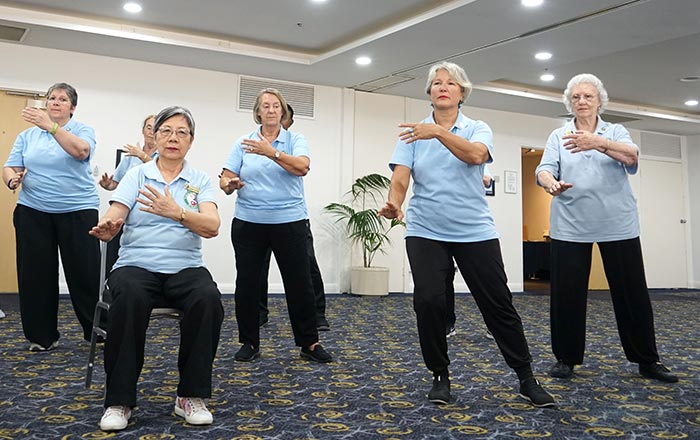
Yes, Tai Chi is a low impact exercise, so it’s very safe.
Although minimal stress is placed on muscles and joints, every individual is different. Honour your body and never push yourself beyond your limits.
Please don’t fall into the trap of thinking that just because your teacher taught you a movement, it must be safe for you. The safety requirements for every style of Tai Chi are different, as the movements aren’t the same.
In regards to the Tai Chi programs that I teach, I’ve consulted with medical experts to make safety my top priority.
In 2005, a New Zealand government body paid for 10,000 older adults to attend Tai Chi classes to improve their health. The Accident and Compensation Corporation (ACC) invited me to help them design safety measures and set up training courses for class teachers – based on the same injury prevention guidelines in my own workshops.
Here are some tips for when you’re doing Tai Chi from home, or in a class:
- Make sure you’re practising in a safe learning environment, with good lighting and no obstacles.
- Practise in a comfortable location that isn’t too cold, hot or windy.
- Drink water if you’re practising on a hot day.
- Warming up and cooling down exercises should be part of your routine.
- Never push your body beyond what feels comfortable for you, even if you think the movement looks easy.
These are easy to learn and most of them are common sense, so many teachers already do this.
Who is tai chi suitable for?

Anybody can learn and enjoy it, including children, people with a disability and older generations.
There’s something for everyone, from the slower paced styles to more vigorous movements of the classical Chen style. It all depends on your preferences and what your body can handle.
People with a disability and the elderly:
I’ve taken extra measures to make sure that Tai Chi is accessible to everyone, by working with my medical colleagues to adapt my programs for almost any chronic condition and disability.
Even people with limited movement can benefit from the principles.
For example, my friend Richard has Guillain-Barre Syndrome, an unusual disease that affected his neurological system. He was lying in an intensive care bed, hardly able to move any part of his body. He visualised Tai Chi for Rehabilitation in his mind, which gradually helped to bring him back to health.
Not just for adults, get the young ones involved too:
I love that Tai Chi unites people from different generations. The whole family can get involved.
It’s particularly suitable for adults looking for gentle exercise, but children also benefit from the practice – which does wonders for their developing brains, physical health and emotional wellbeing.
Children love to learn, and they’re very good at it, especially when enjoying a fun activity. Tai Chi provides the tools they need to feel balanced and better cope with stress. It’s a good chance to step away from the screens and connect with nature.
Standard Tai Chi classes are suitable for children, but they will probably get more out of a modified program that captures their attention and engages their strong imaginations.
How often should I practise Tai Chi before seeing results?
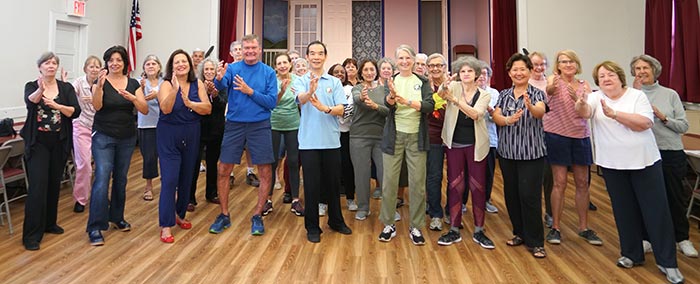
It’s a good idea to practise every day for at least 10 minutes a day, to get into a routine.
This is generally achievable, even on busy days.
Many people do 20 to 30 minutes of Tai Chi every day, but you can continue for longer as this activity isn’t strenuous. It all depends on your individual circumstances.
Benefits will occur after a few months of regular practice, but many people notice they’re feeling calmer, more grounded and healthier even before that. These benefits will deepen if you commit to a long-term routine.
Tai Chi for Health programs (Dr Lam incorporates medical science)

There are many forms of Tai Chi, but programs that are designed specifically for health offer more targeted benefits.
Since 1997, I’ve worked with medical experts to create a series of Tai Chi for Health programs that are safe, easy and enjoyable to learn.
These instructional videos make Tai Chi accessible to people from the comfort of their homes, even if they have a disability or illness that restricts their movement. The lessons are suitable for all levels, from beginners to advanced.
But here’s the best part…
A number of published studies show these programs effectively prevent chronic diseases from occurring, or help people to manage their symptoms better.
I first created a program that helps people with arthritis to improve their condition. The results were so amazing that many arthritis foundations around the world support this program.
After that, I combined my knowledge of medicine, sport and Tai Chi to create programs for other conditions – with the help of medical experts in each field. Our approach is largely based on the Yang style with gentle and large movements.
Programs include:
- Tai Chi for Health
- Tai Chi for Arthritis
- Seated Tai Chi for Arthritis
- Tai Chi for Diabetes
- Tai Chi for Back Pain
- Tai Chi for Osteoporosis
- Tai Chi for Rehabilitation
- Tai Chi for Energy
- Tai Chi for Beginners
- Intermediate Tai Chi
- Advanced Tai Chi
- Tai Chi for Kids
- Tai Chi @ Work
- Tai Chi for Memory
- Tai Chi for Heart Conditions
Is it possible to learn Tai Chi from a DVD or video?
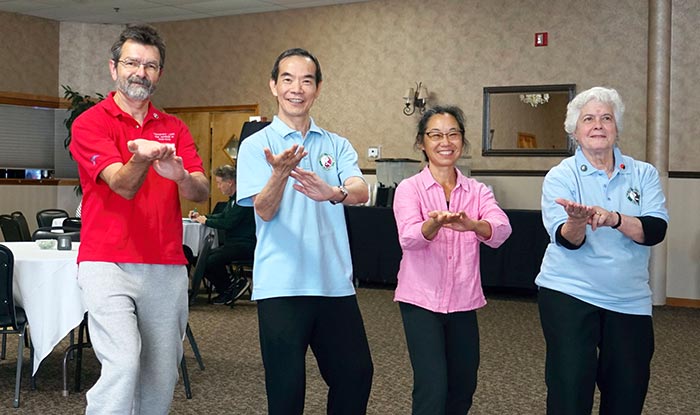
Yes, as long as the video has been constructed well. Thousands of people have learnt Tai Chi from our videos over the years – improving their mental and physical health along the way.
One advantage of learning from video is you can go at your own pace, without feeling pressured by others in the room. You can also rewind to watch the movements over and over again, until you get a grasp of how it’s done.
Another advantage is you don’t need to leave your home, which is particularly helpful during the global pandemic.
We also offer face-to-face workshops for people who want to work directly with an instructor (as long as COVID-19 social distancing requirements permit this).
Medical benefits of Tai Chi for Health programs (scientific studies)
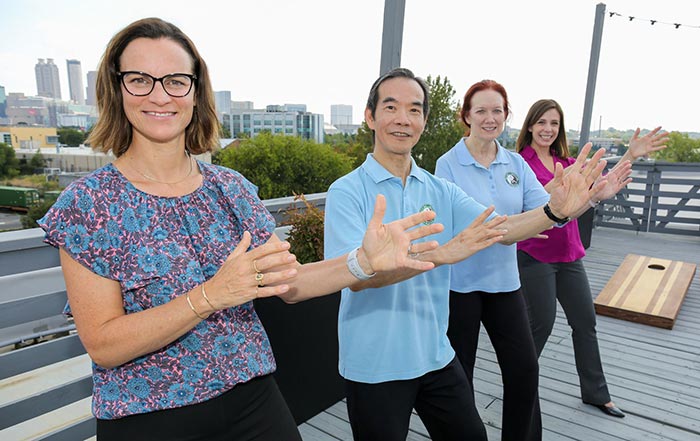
Medical research shows that Tai Chi improves chronic conditions and prevents problems associated ageing.
Randomised controlled studies from around the world have evaluated the benefits of our Tai Chi for Health programs.
What’s more, many of my research papers have been published in peer-reviewed medical journals. I’ve contributed on some level as chief investigator, co-investigator, consultant or advisor.
Here’s a list of 35 studies published by myself (Dr Lam) and associates.
Accreditations and global organisations that support our programs can be found here.
Now, let’s take a deeper look at a few of these studies:
Benefits for arthritis…
Studies show the Tai Chi for Arthritis program effectively relieves pain, improves physical movement, flexibility and balance. There’s low risk of injury with the exercises.
Tai Chi for Arthritis study (Journal of Rheumatology 2003):
72 patients with osteoarthritis were randomly put into an experimental or control group. They completed pre and post-test measures over 12 weeks.
Results show the Tai Chi group ended up with:
- 35% less pain
- 29% less stiffness
- 29% higher ability to perform daily tasks (like climbing stairs)
- Improved abdominal muscles
- Better balance
Benefits for diabetes…
Tai Chi helps people with diabetes to control their disease, and may even lower blood glucose levels.
Tai Chi for Diabetes Study (2008):
This randomised control trial assessed the effects of a modified Tai Chi program on people with poorly controlled type II diabetes.
For both the control and Tai Chi group, there were improvements in:
- HbA1c indicator
- Six-metre walk test
- Total cholesterol levels
On top of this, improvements in physical and social functioning were found in the Tai Chi group.
Researchers believe that Tai Chi may be a useful part of treatment for type II diabetes. However, a higher number of sessions per week (or longer duration) may be required to show statistically significant reductions in metabolic or cardiovascular parameters.
The study can be found here.
Benefits for back pain…
Research shows us that Tai Chi can relieve back pain, improve flexibility and strengthen abdominal and pelvic muscles.
Tai Chi for Back Pain (study by Sydney University):
This randomised controlled trial involved 160 volunteers aged between 18 and 70 with a diagnosis of “persistent non-specific low back pain”. Half the people participated in 18 Tai Chi group sessions for 10 weeks, while the control group continued with their usual health care.
Results show that Tai Chi significantly reduced the intensity of back symptoms.
There were improvements for 75% of the Tai Chi participants – indicating this intervention effectively improves pain and disability outcomes.
The full study can be found in the Arthritis Care & Research Journal November 2011.
Fall prevention benefits…
Tai Chi helps older people to improve their balance, muscle strength and confidence, so they’re less likely to fall and injure themselves. The CDC even recommends our Tai Chi for Arthritis program for fall prevention.
Tai Chi for Fall Prevention study (2007)
This was the largest fall prevention study in the world, with 702 participants. Weekly community-based Tai Chi classes significantly reduced the number of falls, as well as the risk of multiple falls by 70%. The full study was published by the Journal of American Geriatric Society.
How to get started with our health programs
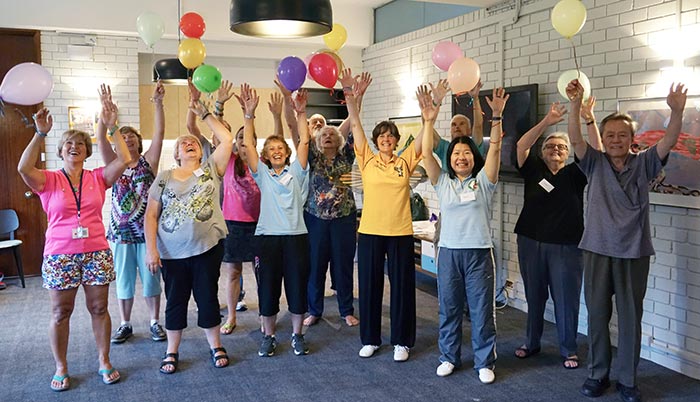
To get a taste of what my Tai Chi lessons involve, you can take some free online classes.
Simply click on the program that interests you. It will take you to another page, scroll down and the first lesson for that program is free (the video is at the bottom of the page).
You can purchase DVDs or online streaming videos of our full programs from here.
Please contact us if you have any questions about Tai Chi (including what program would be best for you).
